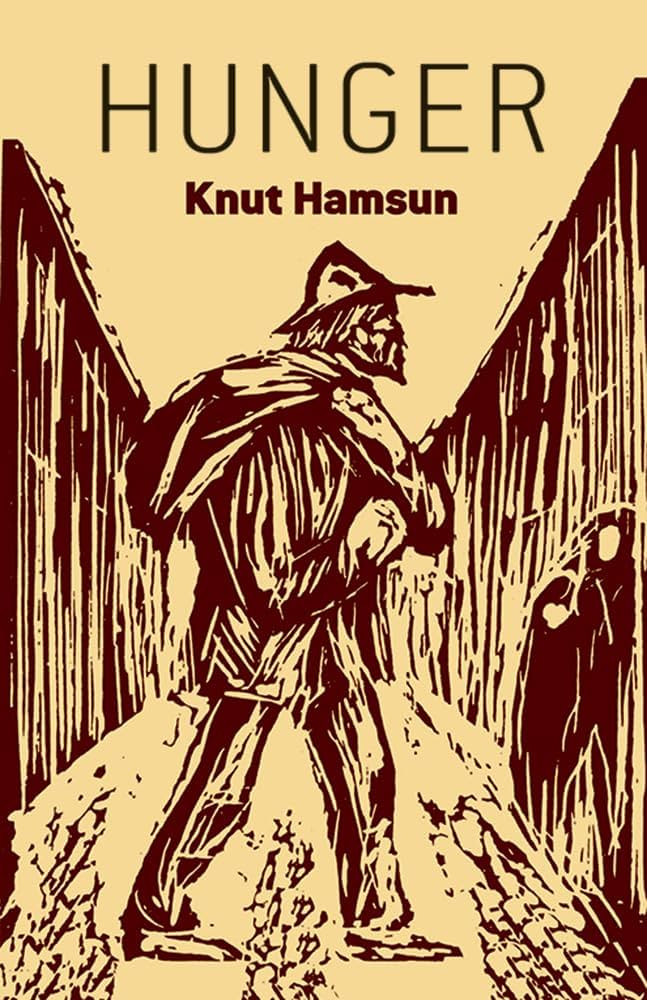Hunger is a literary novel work penned by the Norwegian writer Knut Hamsun and released in 1890.
Summary of Hunger Book
“The Hunger” novel tells the story of a young aspiring writer wandering in the city of Kristiania. He worries about how to pay his rent, where to find his next meal, and how to sell his writings to the local newspaper. At times, he manages to sell an article and get some food, but it’s never enough to escape poverty. Hunger almost drives him to madness. He talks to himself and scares the people around him.
He applies for various jobs, but he is rejected every time. He falls in love with a girl, but his love ends only in humiliation. He desperately tries to present himself as a respectable member of society, but his emaciated appearance and tattered clothes make it impossible to hide his terrible situation. He curses himself and wonders why God chose him to suffer so much. In the end, he escapes from the city on a ship bound for Spain, working as a deckhand.
The main theme of “Hunger” is the conflict between the extraordinary individual and society, a common theme in all of Hamsun’s novels. The unnamed protagonist of the novel tries to find his place in society throughout the story. He tries to do this by proving himself as a writer and applying for various jobs, but society rejects him. He cannot find a job as a firefighter because he wears glasses, and he is not hired as an accountant because he wrote the wrong date on his application letter. As a writer, he achieves some success by selling a few articles, but he never completes the main stories he wants to write.
Hunger Book Summary: The Unforgettable Psychological Novel of Nobel Prize-Winning Author Knut Hamsun
The novel also portrays an internal struggle. It is crucial for the protagonist to maintain his dignity at all costs. Even when he has no money, he pawns his jacket to give some money to a beggar. Despite a terrible hunger, he refuses the breakfast provided to the homeless while spending a night in jail. He stubbornly refuses to compromise his honor. In the end, when the girl he loves tries to send him money to help, he feels the only way to preserve his honor is to leave the city.
“Hunger” can also be seen as a story about artistic integrity and the importance of a self-sufficient artist. How can a writer convey his struggles better than by resorting to eating his own pen? An interesting aspect of the novel is the protagonist’s obsession with creating his own language and reality. He becomes a sort of deceiver, telling lies and inventing different personalities to hide his true self. At one point in the novel, he invents a new word: ‘Kuboaa.’
He takes pride in creating this new word and believes it holds great significance. However, he fails to find the meaning of the word, leading to a sense of despair. Describing what the word does not mean, rather than what it means, symbolizes the struggle of a writer to find artistic value and individuality. Instead of using the real name of the girl he loves, he prefers to call her Ylajali, a name he made up.
The mysterious girl named Ylajali appears throughout the four sections of the novel, and the entire story somehow revolves around her. When the girl he loves tries to send him money, the story abruptly ends. Receiving money from the girl he loves becomes the last straw for the anti-hero. The only way to preserve his honor is to leave everything behind.
The protagonist leaving the city at the end of the story is of great significance. Hamsun’s later novels reject city life and embrace the mystical connection between humans and nature. His antipathy towards modernity and the desire for a simpler life connected to nature will become a major theme in his famous 1920 novel Growth of the Soil, for which Knut Hamsun wins the Nobel Prize in Literature.


homepage
I couldn’t refrain from commenting. Well written!